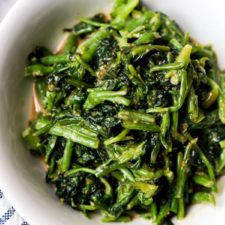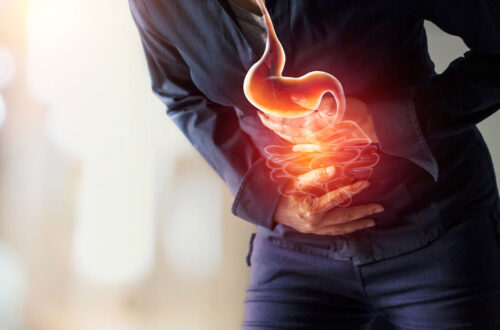SOME AWESOME HEALTH BENEFITS OF WATERCRESS
One of the many health benefits of watercress is that, its depurative, stimulant and balsamic. How healthy and cheap it is to combine watercress with dandelion, sorrel and nettle to get wild salads.
Keeping up with healthy living and enjoying nature requires knowledge and everyone ought to acquire this knowledge. Knowing what a particular plant contains or its components is very important.
Just like other medicinal plants, watercress contains gluconasturtosid, iodine and iron. It has a bitter component and vitamins A, C, E and K.
Watercress is a climbing plant of the cruciferae family with dark green leaves and small white flowers. Flavor from watercress has the same resemblance with that of Mustard, although it seems less spicy.

The parts to use are the leaves and young stems. Watercress is a cruciferous plant (vegetable) and cruciferous vegetables contain a compound called sulforaphane and this brings their beneficial effects against cancer.
According to medicinal news today, consuming a significant amount (quantity) of watercress (like a cup of watercress a day) would help a person meet their vitamin K requirement in a day. Good amount of vitamin K consumption brings improvement of the bone and improves how the body absorbs calcium.
Properties of Watercress
As stated earlier, it contains a sulphured glycoside, iodine, iron and vitamins
- Blood diuretic and depurative: watercress is highly recommended for arthritis, obesity, gout especially when the diet is rich in meat and fats.
- Watercress contains a soft stimulant effect regarding every metabolic functions. It activates the metabolism because it is an appetizer
- Since it contains a good amount of vitamins A, C, E and K, besides minerals, watercress helps to conquer weakness caused by lack of vitamins and minerals.
- Patients or people suffering from bronchial disorder can count on its properties. This is because watercress is quite expectorant. It has essential sulphured oils which promotes expectoration and relieves the respiratory system from congestion.
- The poultices of watercress enhance the formation of new skin when applied on sores or wounds.
- Its cicatrizing properties help prevent hair loss when applied in their scalp
- Regenerates the skin when cases of eczema, acne and dermatosis arise.

Aside the fact that it is invigorating and acts an appetizer, watercress has a notable blood depurative effects.
Uses (Internal use)
- Juice: Sweeten watercress with honey. Drink half a glass with each meal
- Raw: Wash it thoroughly before consuming. It may harbor small larvae, so do keep it in salt water. Eat it young and fresh. Do not try to preserve it. It may become toxic
External Use
- Use as lotion: Apply the juice directly on the skin.
Nutritional Value Regarding Health Benefits of Watercress
As states by the United Department of Agriculture’s Food Data Central database, a cup of fresh watercress weighing about 34g has less than 4 calories.
A cup of watercress provides:-
Protein, fat, carbohydrate and fibre and a cup of watercress can also provide vitamins A, C, E, and K, Calcium, manganese, potassium, magnesium, phosphorus, vitamin E and vitamin B-6
Warning:
Watercress may interfere with other medications especially now we know that it contains vitamin K which has a role in blood clothing. It may have an abortifacient effect.
Therefore, pregnant women should avoid watercress. The plants with flowers or fruits should not be used. They are too strong.
Source: Medical News Today
Visit BLOG POSTS
Health Benefits of Blueberries

A graduate of Computer Science and Information Management Technology. Diploma – Caregiving, Certificates – Dementia and Diabetes Awareness and Management. A researcher, blogger, songwriter, singer and acoustic guitarist. Born in an environment where natural talents such as healing are imparted at our natural birth. This natural talents of healing is the result of our genetic inheritance and the training from family environment.













